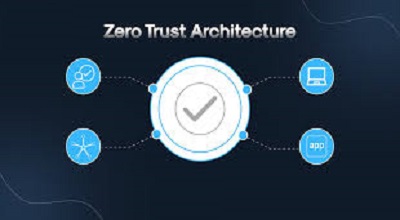Zero Trust Architecture
Zero Trust Architecture: In today’s rapidly evolving cybersecurity landscape, traditional perimeter-based security models are no longer sufficient. Zero Trust Architecture (ZTA) has emerged as a revolutionary approach to securing modern IT environments. Unlike conventional security models that assume everything inside a network is trustworthy, ZTA operates on the principle of “never trust, always verify.”
At ZoomDoors.com, we explore the latest trends in cybersecurity, and in this comprehensive guide, we’ll break down Zero Trust Architecture, its core principles, benefits, real-world examples, and how organizations can implement it effectively.
What is Zero Trust Architecture (ZTA)?
Zero Trust Architecture is a security framework that eliminates the concept of implicit trust within a network. Instead, it enforces strict identity verification, least-privilege access, and continuous monitoring for every user, device, and application—regardless of their location.
Core Principles of Zero Trust
- Never Trust, Always Verify – No user or device is trusted by default, even if they are inside the network.
- Least Privilege Access – Users and systems are granted only the minimum access necessary.
- Micro-Segmentation – Networks are divided into smaller, isolated segments to limit lateral movement.
- Continuous Monitoring & Validation – Security checks are performed in real-time.
- Assume Breach – The model operates under the assumption that threats can come from anywhere.
Why is Zero Trust Architecture Important in 2025?
With the rise of remote work, cloud computing, and sophisticated cyber threats, traditional security models fail to provide adequate protection. Here’s why ZTA is critical:
- Prevents Lateral Movement – Attackers can’t easily move across networks.
- Reduces Attack Surface – Limits exposure by enforcing strict access controls.
- Enhances Compliance – Helps meet GDPR, HIPAA, and other regulatory requirements.
- Supports Hybrid Work Environments – Secures remote employees and cloud-based resources.
Key Components of Zero Trust Architecture
To implement ZTA effectively, organizations must integrate the following components:
1. Identity and Access Management (IAM)
- Multi-Factor Authentication (MFA)
- Role-Based Access Control (RBAC)
- Single Sign-On (SSO)
2. Network Segmentation & Micro-Segmentation
- Divides networks into smaller, isolated zones.
- Prevents attackers from moving laterally.
3. Endpoint Security
- Ensures all devices comply with security policies.
- Uses Endpoint Detection and Response (EDR) tools.
4. Continuous Monitoring & Analytics
- AI-driven threat detection.
- Real-time behavioral analysis.
5. Encryption & Data Protection
- Encrypts data in transit and at rest.
- Ensures only authorized users can access sensitive information.
Real-World Examples of Zero Trust Architecture
1: Google’s BeyondCorp
- Google shifted from a VPN-based model to a Zero Trust framework.
- Employees access applications based on identity and device trust, not network location.
2: Microsoft’s Zero Trust Implementation
- Uses Azure Active Directory (AD) and Conditional Access Policies.
- Continuously verifies user sessions to prevent unauthorized access.
3: U.S. Federal Government (CISA’s Zero Trust Maturity Model)
- The Cybersecurity and Infrastructure Security Agency (CISA) mandates ZTA for federal agencies.
- Focuses on identity, devices, networks, applications, and data.
4: Financial Sector (Banks & FinTech Companies)
- Banks use ZTA to secure customer transactions and prevent fraud.
- Continuous authentication ensures only legitimate users access accounts.
5: Healthcare Industry (HIPAA Compliance)
- Hospitals implement ZTA to protect patient records.
- Ensures only authorized medical staff can access sensitive data.
How to Implement Zero Trust Architecture? (Step-by-Step Guide)?
1: Assess Your Current Security Posture
- Identify vulnerabilities in your existing security model.
2: Define Protect Surfaces (Critical Data & Assets)
- Determine what needs the highest level of protection.
3: Implement Strong Identity Verification
- Enforce MFA and least-privilege access.
4: Adopt Micro-Segmentation
- Isolate network segments to minimize breach impact.
5: Deploy Continuous Monitoring Tools
- Use AI and machine learning for real-time threat detection.
6: Educate Employees on Zero Trust Best Practices
- Train staff on phishing prevention and secure access habits.
Challenges of Zero Trust Adoption
While ZTA offers robust security, organizations may face:
- Complex Implementation – Requires restructuring existing infrastructure.
- User Resistance – Employees may find strict access controls inconvenient.
- High Initial Costs – Investment in new security tools and training.
Future of Zero Trust Architecture
As cyber threats evolve, ZTA will continue to advance with:
- AI-Powered Threat Detection – More adaptive security measures.
- Integration with IoT & 5G – Securing smart devices and faster networks.
- Automated Policy Enforcement – Reducing human error in access control.
FAQs About Zero Trust Architecture
1. What is the main goal of Zero Trust Architecture?
The primary goal is to eliminate implicit trust and enforce strict access controls to prevent unauthorized access.
2. Does Zero Trust replace VPNs?
Yes, in many cases. ZTA provides more granular security than traditional VPNs, which grant broad network access.
3. Is Zero Trust only for large enterprises?
No, businesses of all sizes can benefit from ZTA, especially with cloud-based solutions making implementation easier.
4. How long does it take to implement Zero Trust?
It varies based on organization size, but a phased approach typically takes 6 months to 2 years.
5. Can Zero Trust prevent all cyber attacks?
While it significantly reduces risk, no system is 100% foolproof. Continuous monitoring and updates are essential.
Conclusion
Zero Trust Architecture is no longer optional—it’s a necessity in today’s threat landscape. By adopting ZTA, organizations can enhance security, reduce breaches, and adapt to modern work environments.

